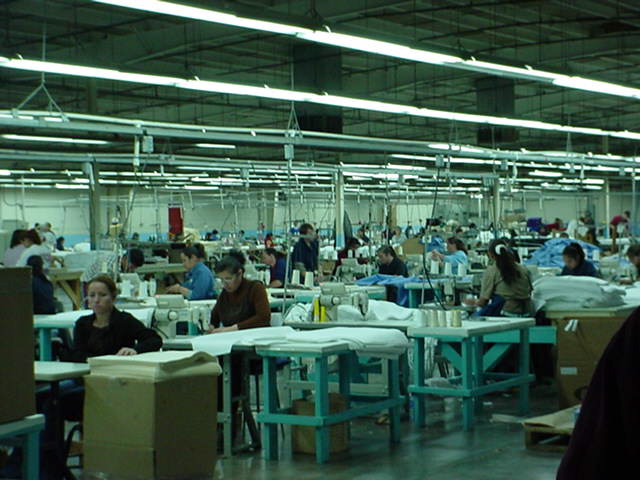




Return to Kevin's Home page
Return to Migration Home page
2-24-03
ASB 340, Tues. 2p
Short essay
What Would A Tuxedo Be Without A Bow T.I.E.?
Looking up in the sky from Tempe Town Lake, there is a steady stream of airplanes on their final approach into Sky Harbor Airport. Nothing stops the forward progression of these metal birds and just as the sun disintegrates over the horizon, the crafts disappear turning into a string of lights. The same effect happens to the valley roads, painted with a multicolor of automobiles, constantly on the move and turning into red and white blurred dots after sunset. People on the move, coming and going to unknown destinations, prompting the question what kind of migrations are involved with one person to the next? Are they transmigrating, immigrating or emigrating, the ever twisting tie of migrating bows, so what is the driving force behind daily migration? Another questioned raised by such activities would be why exactly are so many people continuously moving from one area to another? To answer some of these inquiries it would be important to understand the need for T.I.E.’s in cultures and the money hungry corporations and countries, representing the tuxedo, that inflicted colonialism and assimilation towards many peoples ways of living.
For an economy built on reciprocity or gift society, before the influence of western ideas there really is no monumental value of the all mighty dollar. The key word, however, comes with the introduction of western influences. Money begins to take over the simple idea of having a precious commodity to be traded with a neighbor who has something that can complete a basic need. Within the Tongan society there was the breakdown in reciprocity when it came to land issues and other shared items within the community. This eventually forced some people to transmigrate and immigrate to other countries to find ways to secure peaceful retirements. These seekers of another way of life may have started a minor assimilation of the Tongan culture when salaries were generated from their travels and sent back to their economy. The situation presented by the Tongan’s was developed more by their own current problems with population growth. However, this is not as drastic as the underdevelopment of third world countries, such as, Mexico forcing migration or the influences of the Colonial Mind in Africa.
Unlike the Tongans, who freely chose to live in a different country, there are other civilizations that are forced to migrate for their own survival. “We are talking about something more subtle and insidious; a heritage of a colonial order in which people with the advantage of considerable power sought their own self-interest, often arrogantly believing they were acting in the interest of the people whose lives they were destroying” (Lappe and Collins, p.77). This effect described by Lappe and Collins in the article, Why can’t people feed themselves? gives a very illustrative view at the greed generated by large corporations, resulting in many people migrating to other areas for their endurance. The story of the colonization of Africa’s agricultural society described how easily a community could be forced to produce certain goods and services while neglecting their own well being, resulting in development of the underdevelopment. Not only were some of the Africans compelled into slave labor own their own soil, but also they were transported to other countries to perform substandard work for the upper classes. This type of forced migration is still happening today with the current situations surrounding Mexico’s free trade society. Once again the people with considerable power, looking after their own self-interest, have found a way to generate even higher profits by feeding off the slave labor of Mexican workers. Unable to maintain enough money for basic survival needs, illegal immigrants cross over the Mexican-American border everyday to escape such suppression. In the end, these people accept the lowest paying and most undesirable jobs in America, versus the sweat shop conditions of their homeland. This can almost resemble the earlier migration paths of the African-Americans.
In conclusion, people are on the move for many different reasons. As shown with some examples, some people are forced to make such decisions to relocate and some do it by choice. Either way no matter what type of migration it is (T.I.E.), the driving energy behind these patterns can be attributed to the rich, tuxedo wearing corporations of greed and power.